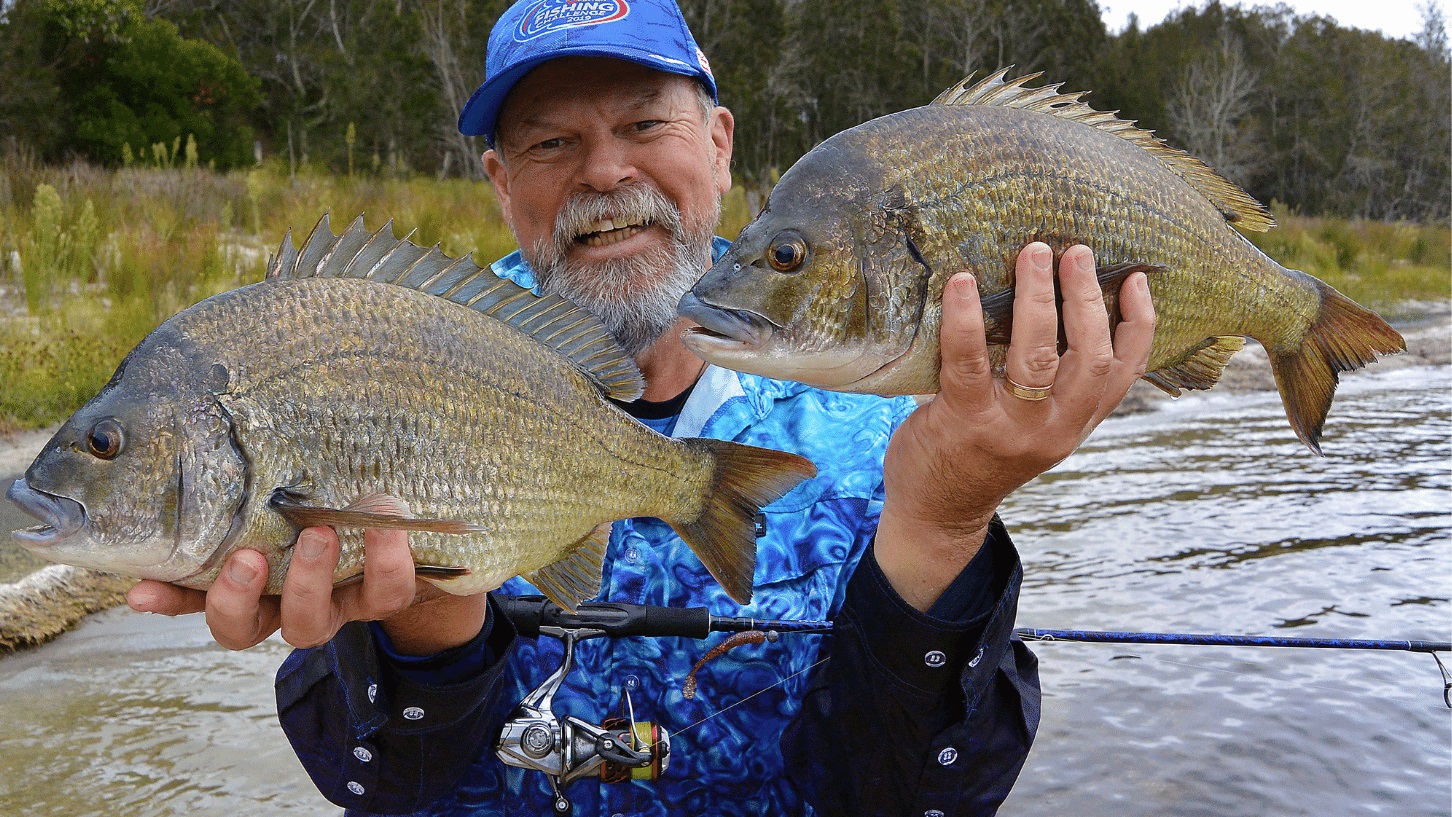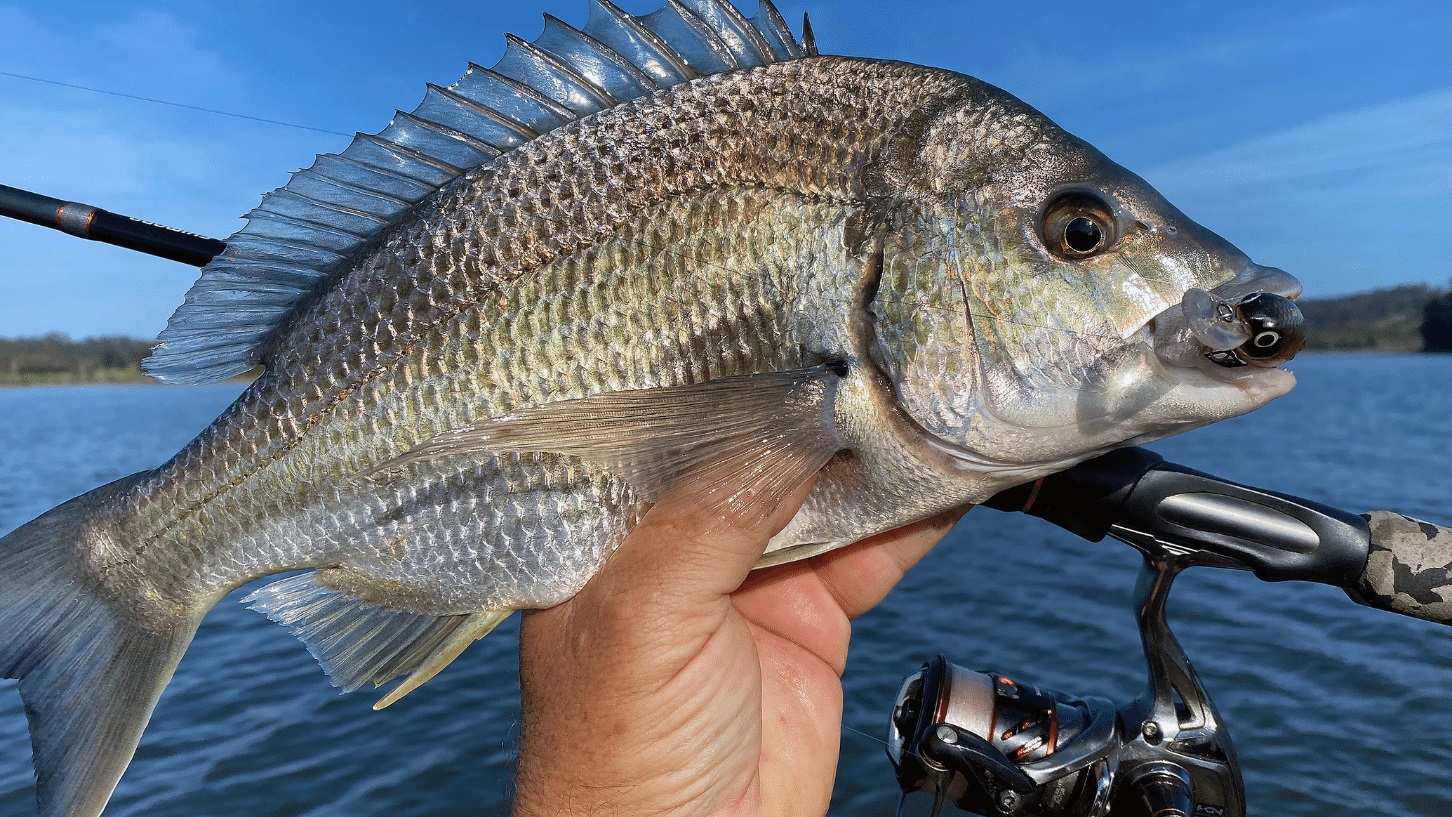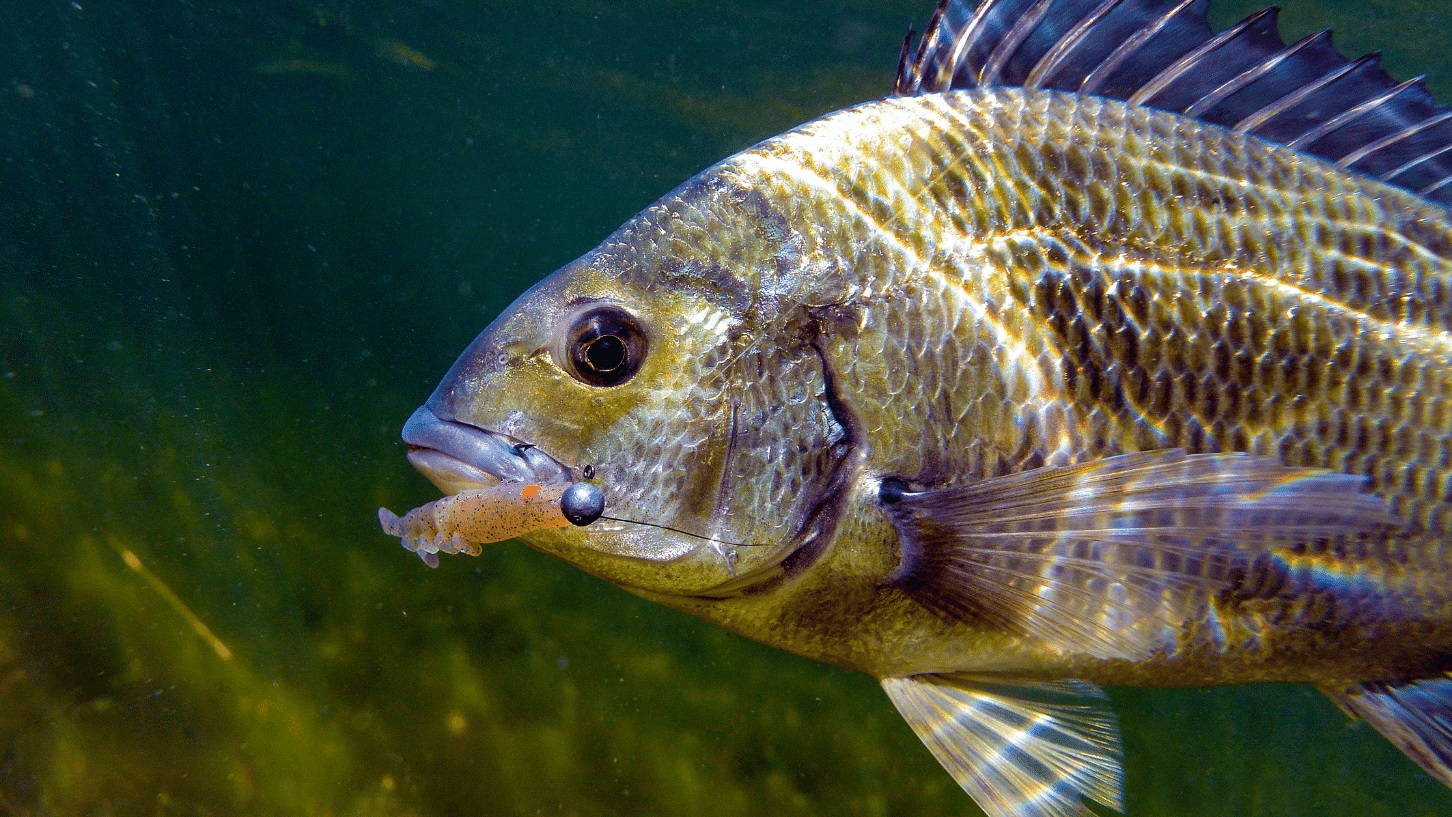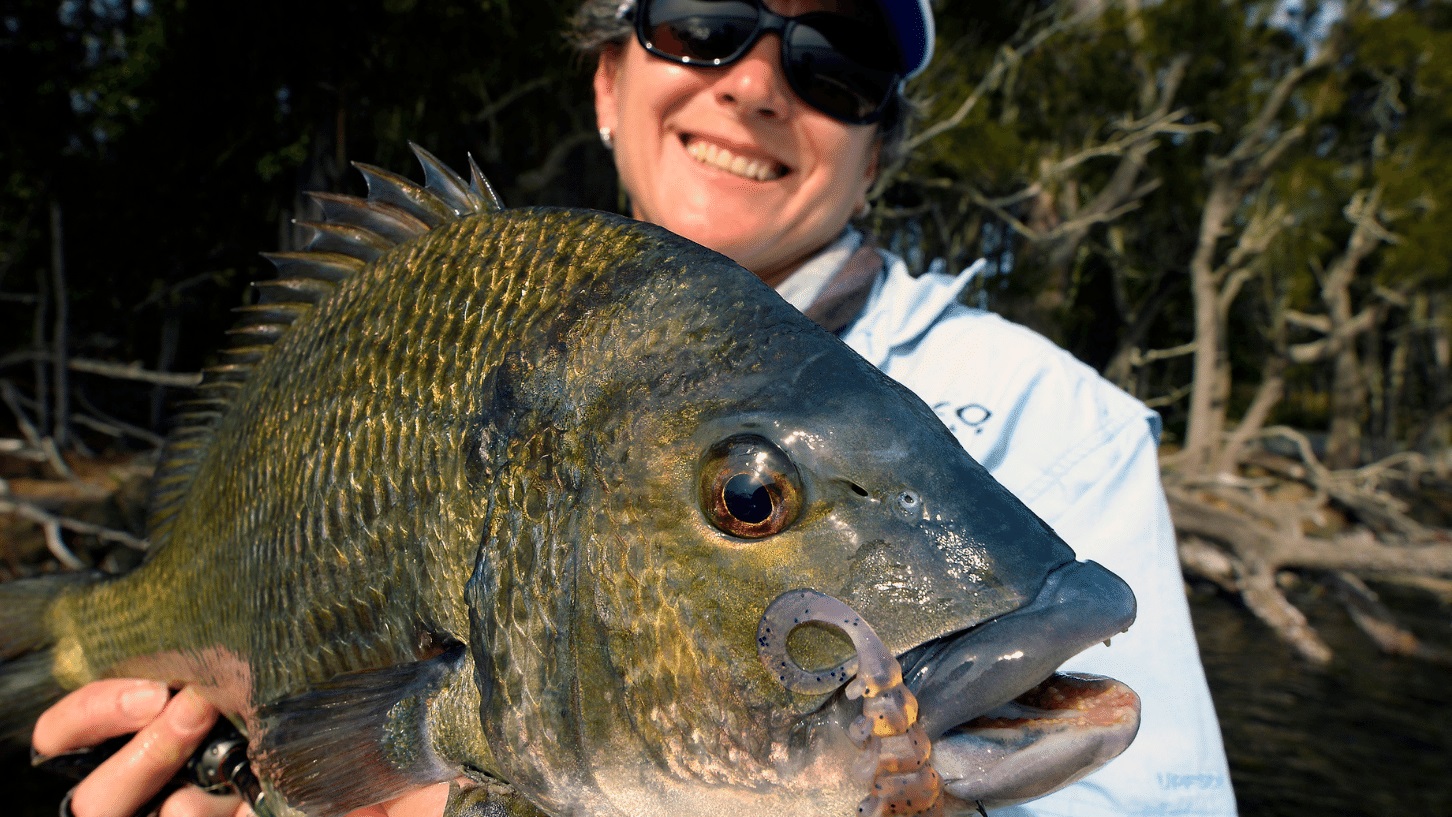| Your browser is not supported. | ||
|
Please browse our site using any of the following options:
| ||
Finesse Fishing For Bream

Bream are undoubtedly one of Australia's most popular recreational fishing target and Starlo reckons that taking a lighter and finer approach when it comes to your gear, will almost always improve your results on bream.
In less than a single generation, catching bream on lures has gone from being an accident or a novelty for most anglers to a regular pursuit for many. Even those who don't really 'get it' and wonder what the hell all the fuss is about, must grudgingly admit that the pursuit of bream on artificials has completely transformed our sport.
I dread to think how many hundreds (more like thousands) of hours I've spent intently pursuing bream on lures over the past 20 years or so. But however many it is, I don't regret one minute of that considerable investment. I believe it has made me a much better angler - on all species and in all environments. Above everything else, however, it has taught me the amazing power of 'finesse'.

Treading that fine line
It'd be fair to say that the concept of 'finesse fishing' has become my personal mantra, guiding philosophy or totem over the past couple of decades. In fact, I bang on about the subject so damn much that it no doubt annoys some people, and I've certainly had a degree of pushback at times from folks who reckon I make too much of it. Nonetheless, I remain totally convinced of the power of finesse in improving strike rates in almost every form of fishing. I've seen it demonstrated far too often in a host of practical fishing situations to ever ignore the message.
As I wrote in a book on exactly this subject some years ago: "I firmly believe that one of the very first things we should consider doing whenever our catch rates fall is to increase the finesse of our angling approach. This is always my first response to tougher fishing. Before I try anything else, I'll shift to longer, finer leaders, thinner main lines, smaller hooks and lures, make longer casts and adopt a stealthier approach to the water. These relatively simple finesse tactics work, and I have proven that fact for myself and many other anglers' countless times over the years, in every imaginable fishing scenario: from mullet to marlin."
I haven't changed my mind on any of this since writing that book. In fact, the passage of years simply serves to reinforce my belief in the effectiveness of the finesse philosophy.
Bream are well schooled fish
Nowhere, in my opinion, is the finesse approach more applicable than when lure fishing for bream, especially in relatively shallow, clear water, but also anywhere that these critters are subjected to intensive fishing pressure (which is a lot of places these days).
There's no doubt whatsoever in my mind that populations of most fish can and do learn to avoid or minimise danger, regardless of whether that threat comes from sharks, seals, dolphins, sea eagles… or man. The longer a fish lives and the more fishing or hunting pressure it is exposed to over that period, the greater its ability to learn or become conditioned to dealing with threats.
Few species demonstrate this phenomenon more unequivocally than members of the bream family. They are masters at hook, net and spear avoidance. It's also likely that catch and release serves to greatly intensify and hammer home the whole 'learning' process by putting 'educated' fish back into the population.
A school of 15 to 30 year old bream - at least a few of which have most likely been caught and released at some stage in their long lives - seems to share some sort of collective wariness when it comes to the passing shadow of a pelican, the splash of a lure, the hum of an electric motor or the click-click-click of a depth sounder transducer. Furthermore, they respond instinctively to each other's body language and - it seems almost certain - to fear pheromones released into the water by other school members. If one spooks, they all spook.
Catching these fish - especially on lures - can be tricky at best and almost impossible at worst, but your greatest chance of success lies with the finesse approach: the finest lines and leaders practical, a stealthy approach and a long cast that lands with minimal impact. Get any part of that process wrong and you'll most likely draw a blank.

Bream leader lore
My starting point when lure fishing for bream in most estuary scenarios is an outfit spooled with braid that's rated by the manufacturer at 3 or 4lb (around 2kg) - bearing in mind that most braids break at close to double what they're rated. To the end of this light braid, I'll typically attach a clear 6lb (3kg) fluorocarbon leader measuring slightly over a rod length. I've caught an awful lot of bream on exactly that set up.
I regularly move up and down from this basic starting point, in terms of finesse, depending on the terrain, water clarity and perceived activity level of the fish. For example, if I'm fishing tight to gnarly snags, I might increase my leader strength to 8lb (4kg) fluorocarbon. If I'm trying to extract fish from between the razor-lined racks of an oyster lease, I may even go to 12 or 15lb (6kg) leaders. I accept that while I'll probably get less bites using these thicker leaders, I'll be able to land more of the fish I hook.
Very rarely would I look for an outfit spooled with heavier braided main line. In my experience, it's unusual to break even the lightest braid in a direct pull with the sorts of leaders I've described. However, there have been a handful of occasions when I've used braids rated at 6-8lb (3-4kg) and 16lb (8kg) leaders, combined with a completely locked up drag, in an effort to literally skid and 'pole' bream out of oyster leases… it works, too!
On the other hand, if the fish are super spooky or the water is extra clear, my first response is to switch to a 4lb (2kg) fluorocarbon leader and perhaps extend that lighter leader to a couple of rod lengths. It's truly amazing the difference this move can make on tougher days.
Personally, I never drop below 4lb leaders when running braided main lines, as this seems counterproductive to me. Instead, my next step on the ultra-finesse path is to switch to an outfit spooled entirely with fluorocarbon carrying a strength rating somewhere between 2-4lb (1-2kg), and to run this skinny line direct to the lure. This is my 'ace up the sleeve' for the most demanding of all breaming scenarios and has saved the day for me on multiple occasions.

Switching to fluorocarbon line for bream
In my experience, the switch to very fine fluorocarbon fished 'straight through' can potentially double or even treble your catch rate, especially on very difficult or finicky bream. If you're game to give it a whirl, I think you may be in for a very pleasant surprise.
While it works with all styles of bream lures, light fluorocarbon fished straight through is especially effective when throwing small, hard body lures for bream. This is something that's been widely popularised in recent years by gun tournament anglers such as Steve Morgan of ABT fame.
Steve and many others swear by it in this role, not only due to its ultra-finesse factor, but because they believe the increased stretch of fluorocarbon over braid provides a shock absorber that reduces the incidence of pulled hooks when running the tiny trebles fitted to most bream hard bodies. They're right, too. Fluorocarbon has a little less stretch than nylon, but quite a bit more than braid, and this seems to make a big difference in terms of fish staying connected.
Despite knowing all of this, I'm damned if I can satisfactorily and completely explain exactly why this 'fluorocarbon straight through' set up is so incredibly effective on bream, but it is. On some occasions, the difference is nothing short of remarkable.
Yes, you'll lose a lot of the flathead you hook as a result of being chewed off, but trust me when I tell you this: on some days, in some places, you'll pin a lot more bream when fishing this way. As a bonus, you'll also get to find out just what a hot little sportfish a kilo bream can really be… Boy, do they go!
Clearly, the reduced visibility of ultra-thin fluorocarbon to fish plays a role in its effectiveness. This is not only about the direct visibility of the line itself, but also any shadow it throws and also its 'sonic signature' or acoustic presence in the water (potentially detected by a fish's lateral line, as well as by its eyes and "ears"). But I suspect there are other subtle forces at play, too.
I firmly believe that lures simply behave more naturally in the water when attached to long lengths of very skinny, highly flexible line. Then there's the whole issue of reduced 'feel' at the angler's end of the chain when using a stretchier line - something that sounds like a negative, but can actually be a positive when it comes to not reacting too early and pulling a lure away from a softly or slowly taking bream. There's a lot of factors involved!
Obviously, this ultra-finesse approach is highly problematic in snaggy country and has no place in oyster leases, but there are plenty of more open water scenarios where it works extra well.

How thin should your line be for bream?
In my opinion, backed up by plenty of on-water experience, it's the actual diameter of the fluorocarbon you choose that's most critical to its effectiveness, rather than the breaking strain stated on the packaging by the manufacturer. Breaking strain claims can be a little 'rubbery' at best, but diametres aren't - or shouldn't be.
The magic mark on the finesse scale appears to be around 0.15mm. Lines finer than this become exponentially more effective at fooling bream, although once you get down to about 0.12mm and thinner, you're dealing with lines that breaks so easily it can be hard to regularly land larger fish. There's a trade-off.
Interestingly, tournament trout fly competitors are similarly fixated by the importance of tippet diameter over rated strength and will change up and down by tiny increments to find out just how thin they need to go to begin scoring decent numbers of trout in a given scenario. It really matters, and it really works.
If you love your bream luring as much as I do, I strongly urge you to give the ultra-finesse approach a try. You might be in for some rather pleasant surprises!
Find your local Anaconda store and check out our extensive range of fishing gear to get you ready for your next bream fishing session.